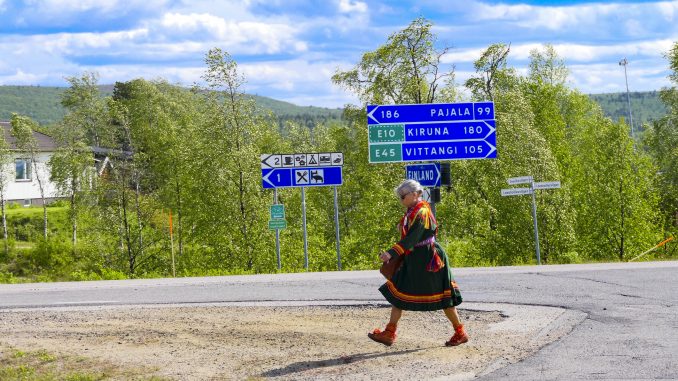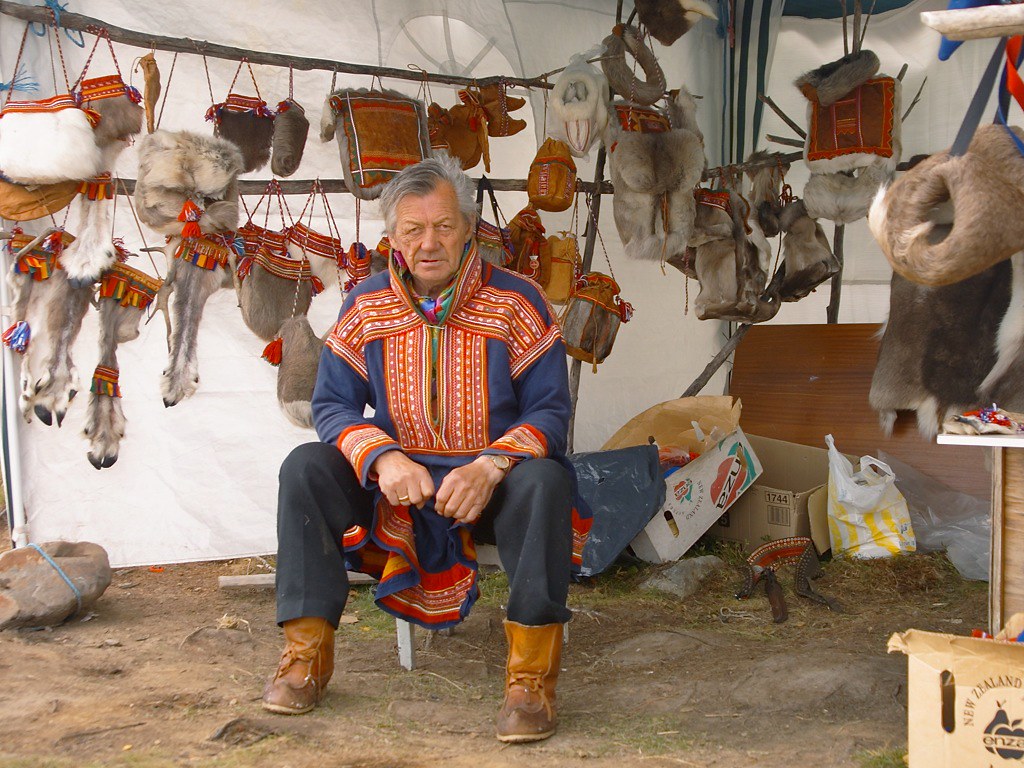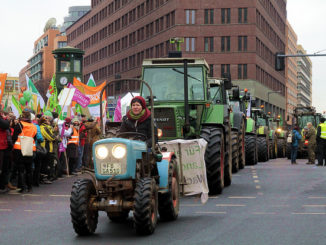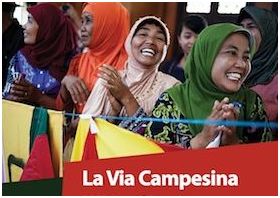
By Astrid Bouchedor, Attila Szocs, Philip Seufert, and Fernando García-Dory
It’s now easier than ever to use international tools to fight for access to land. By crafting a strategy and tooling up with the right legislation, social movements and civil society organisations can achieve wins for land rights — as we can learn from the Sami people’s historic victory earlier this year, write Astrid Bouchedor, Attila Szocs, Philip Seufert, and Fernando García-Dory.
Engaging in international decision-making spaces has been one of the strategies of social movements and civil society organisations (CSOs) aimed at advancing their rights. Such work is based on the conviction that peoples’ struggles for land and territory cannot only be limited by the national borders of our countries, but need to be internationalist struggles.
Social movements have therefore been using international public institutions to denounce the advancement of policies that seek to reconfigure people’s territories into a source of profit for the capitalist classes of the planet – for example through free trade agreements, international investment protection agreements, international financial deregulation, carbon and emissions markets, as well as the promotion of private property rights over land, fisheries, forests, water, seeds, etc. At the same time, they have sought to contribute to the creation of new norms and institutions that democratize the current international order, and advance justice and the right of communities and peoples to their lands and territories.
Based on many years of mobilization, advocacy and negotiation with governments, social movements and CSOs have succeeded in advancing their rights in a number of international documents that have been adopted in recent years. Some of the most important achievements are:
- The United Nations Declaration on the Rights of Peasants and Other People Working in Rural Areas (UNDROP) 2018
- The United Nations Declaration on the Rights of Indigenous Peoples (UNDRIP); 2007
- The Voluntary Guidelines on the Responsible Governance of Tenure of Land, Fisheries and Forests (Tenure Guidelines or VGGT); 2012
- The Voluntary Guidelines for Securing Sustainable Small-Scale Fisheries (SSF Guidelines); 2014
- General Recommendation No. 34 on the Rights of Rural Women, by the UN Committee on the Elimination of Discrimination Against Women (CEDAW GR 34). 2016
These instruments are additional tools that social movements can use to advance their struggles. When organizations think about using them, they should bear the following things in mind:
1. No agreement, no matter how strong and progressive it may be, will be automatically implemented. This requires much work and mobilization. The challenge is to give a sense to these instruments within the local context, and to interpret them in a way that enables them to support the needs and aspirations of local people.
2. Whether to use one or several international instruments, which one(s) and how, is all part of a strategic decision that organisations need to take. There may be reasons why organisations opt not to use them in their specific context. It is important to bear in mind that there are also international instruments that are not suitable, either because of their content, or because they are not legitimate (see below). Assessing which tools to use is an important step when building a strategy.
Using international tools is becoming easier as new international instruments are developed to regulate land access and land use and protect the right to land. The most recent is the United Declaration on the rights of peasants (2018), which explicitly recognises and protects the right to land, while the most comprehensive instrument remains the Guidelines on the Responsible Governance of Tenure which have already been used to advance land struggles in Romania and Belgium. In some instances, national courts can also refer not only to national regulations but also to international instruments to defend use rights and prevent infringements, as was recently illustrated by a legal decision giving precedence to the right of use of Sami pastoralists over the Swedish State (see below).
Building your strategy: Assess which legal texts to use to advance your rights
It is important to understand that there are important differences between different international instruments. Apart from their content, the process of how a given instrument has been developed matters a lot, as the following example shows:
When the current wave of land grabbing started to get broad attention around 2009, some rich countries and the World Bank came up with a set of Principles for Responsible Agricultural Investments (PRAI). Not only were these a tool to whitewash land grabs, they also had been developed by a small number of governments and UN institutions. Social movements of small-scale food producers strongly denounced the PRAI, and called for a comprehensive response to land and resource grabbing, based on decades of struggle to advance agrarian reform and human rights-based land governance. This led to the development of the Tenure Guidelines, which were developed through a participatory process and are based on the human rights obligations of States.

Sami pastoralists’ struggle: a historic legal victory in Sweden
The North of the Scandinavian peninsula and part of the Kola peninsula in Russia is known by the Sami people as Sapmi, a single land and cultural unit which exists beyond the borders imposed by nation-states. The Sami people, with an estimated population of around 80,000, have developed a rich culture through millennia based on reindeer herding and seasonal mobility, and a sophisticated understanding of the commons. This culture was almost erased by Western Nordic European colonial powers who banned their language, traditions, practices and rights to their land for centuries.
In the 70s, the Sami people started a protest against the Alta river dam, which galvanized a coordination and reaffirmation of Sami identity and rights, which resulted in recognition and victories in legal cases in Sweden, Norway and Finland. Amongst them, the Sami community of Girjas Sameby began a legal action against the Swedish state in 2009, six years after a new hunting law gave individual landowners the right to decide on small game hunting and fishing rights on their properties. This law had led to a significant increase in hunting across the territory, which negatively impacted reindeer husbandry.

In January 2020, the Girjas Sameby community of reindeer herders won a historic case on land rights. The five judges ruled unanimously in favour of giving the Sami community rights to the land. The court ruled that the community had an exclusive right to fishing and hunting in their area, based on their presence there from time immemorial (old Swedish concept of urminnes hävd). It also means that the community, but not the State, can confer these rights to others.
Interestingly, the court examined the International Convention on Indigenous Rights (ILO 169), which states that the implementation of national rules must take into account customary indigenous people rights and law. Although Sweden has not ratified the convention, the Court considered it to be an established part of international law.
This decision is of primary importance for the local Sami, but could also set a precedent for other indigenous communities, in Sweden or elsewhere, for claiming rights to property or land use based on historical precedent.
This is an excerpt from Chapter 2 of the handbook “Your Land, My Land, Our Land: Grassroots Strategies to Preserve Farmland and Access to Land for Peasant Farming and Agroecology”, published by Nyéléni Europe and Central Asia platform for Food Sovereignty. ARC2020 has previously published an excerpt from the introduction to the report and another excerpt on Combating The Financialisation Of Agriculture.
The handbook is available in English, French and Spanish
The authors of this section are Astrid Bouchedor (FIAN Belgium), Attila Szocs (Eco Ruralis), Philip Seufert (FIAN International) and Fernando García-Dory (WAPMI).
More on access to land
Combating The Financialisation Of Agriculture: Your Land, My Land, Our Land
Comprehensive Tool Kit for Agroecological Land Access Launched
‘Too good to be true’ – The UK Co-op Helping New Entrants Get Access to Land
Rural Dialogues | Intergenerational Collaboration in the Vineyards of Southern France






